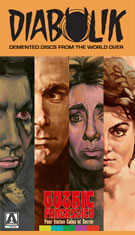
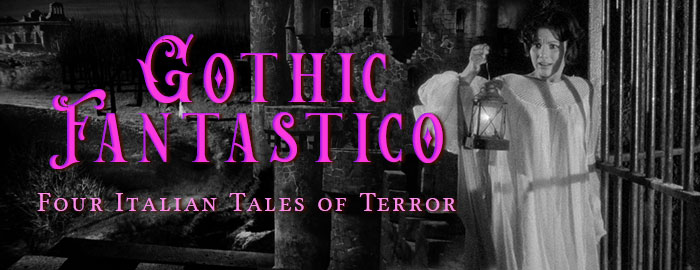


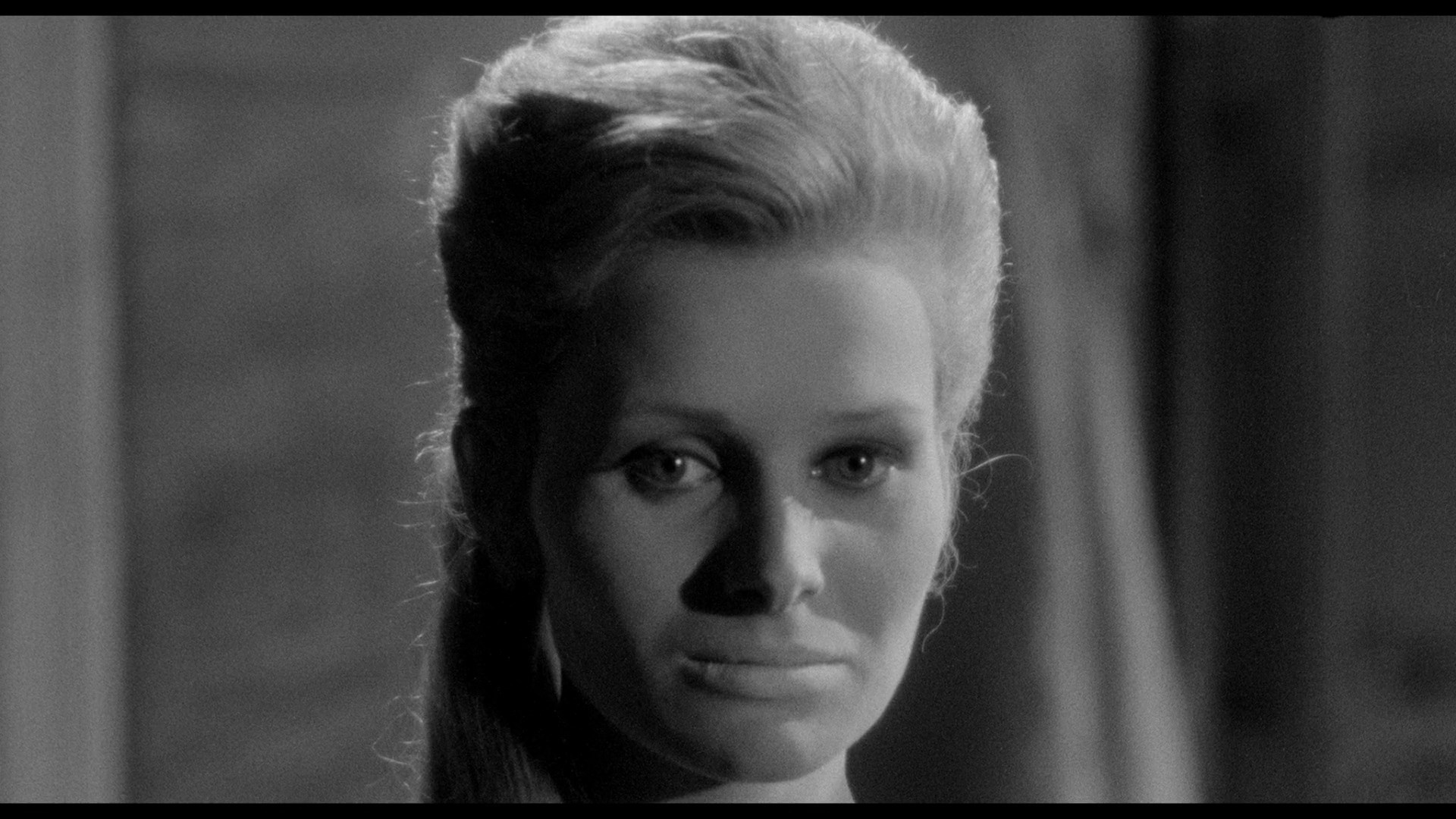 with melodramatic Gothic horror films in the wake of the
with melodramatic Gothic horror films in the wake of the 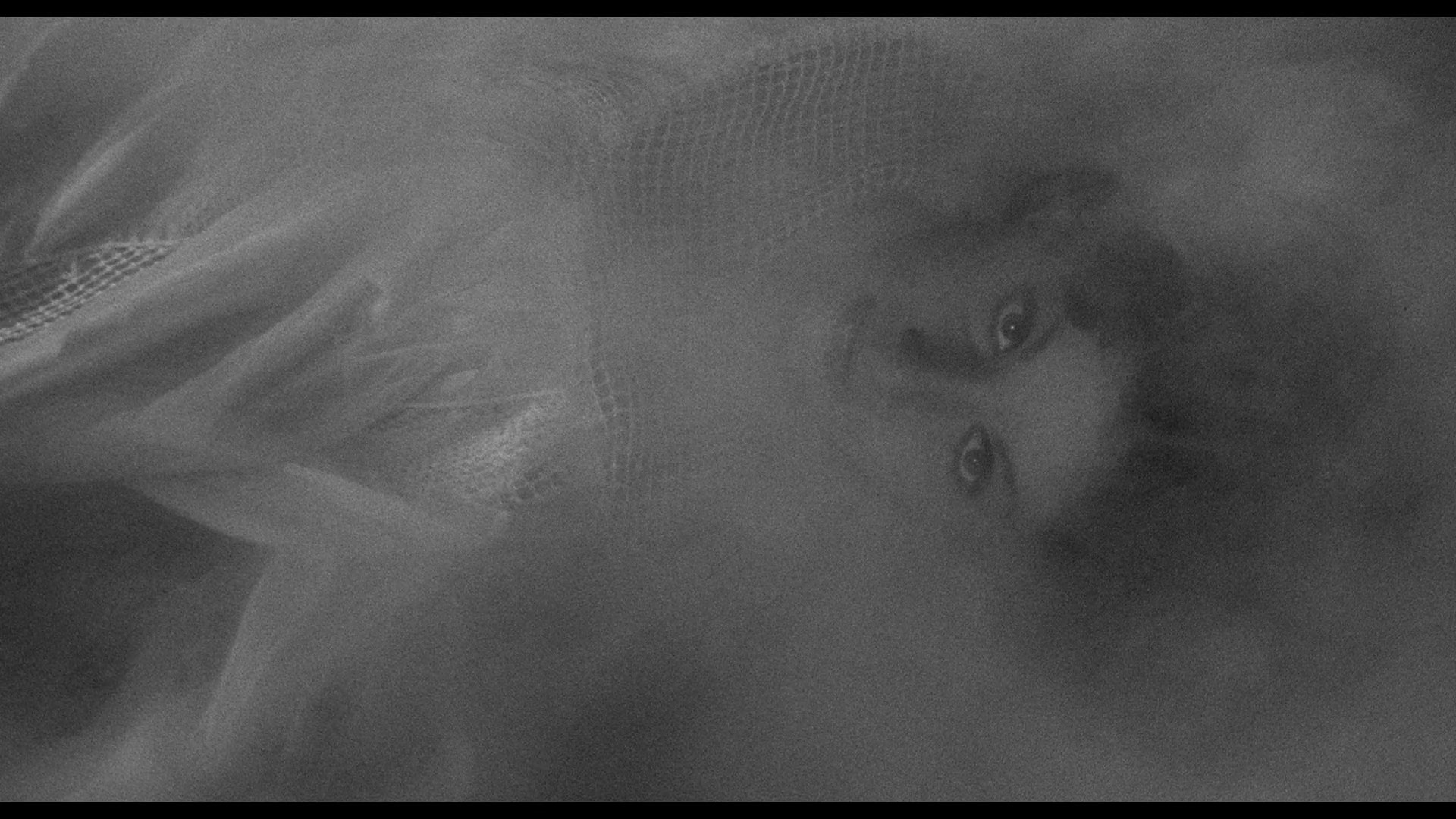 trailblazing I Vampiri and Black Sunday, with filmmakers like Mario Bava, Antonio Margheriti, and Riccardo Freda finding a seemingly endless demand abroad for product that could play alongside the more lavishly budgeted period chillers from the likes of Roger Corman in the U.S. and Hammer in the U.K. However, quite a few managed to fall through the cracks with minimal or no international play, and in 2022 Arrow Video addressed that oversight with the four-disc Blu-ray set, Gothic Fantastico: Four Italian Tales of Terror, featuring a quartet of delicious black-and-white delights with 2K restorations from their camera negatives in far superior condition to what collectors have had to endure in the past. Half of the films have never even been released dubbed or subtitled in any official capacity before, while the other two have been largely consigned to the dregs of gray market trading or dupey budget label discs in the past. Outfitted with a slew of extras, this is pure catnip for Euro horror fans and long overdue for every title included here. The limited edition box also comes with an 80-page book featuring new essays by Roberto Curti, Rob Talbot, Jerome Reuter, Rod Barnett and Kimberly Lindbergs, plus a fold-out double-sided poster and reversible sleeves featuring the original poster art and new designs by Colin Murdoch.
trailblazing I Vampiri and Black Sunday, with filmmakers like Mario Bava, Antonio Margheriti, and Riccardo Freda finding a seemingly endless demand abroad for product that could play alongside the more lavishly budgeted period chillers from the likes of Roger Corman in the U.S. and Hammer in the U.K. However, quite a few managed to fall through the cracks with minimal or no international play, and in 2022 Arrow Video addressed that oversight with the four-disc Blu-ray set, Gothic Fantastico: Four Italian Tales of Terror, featuring a quartet of delicious black-and-white delights with 2K restorations from their camera negatives in far superior condition to what collectors have had to endure in the past. Half of the films have never even been released dubbed or subtitled in any official capacity before, while the other two have been largely consigned to the dregs of gray market trading or dupey budget label discs in the past. Outfitted with a slew of extras, this is pure catnip for Euro horror fans and long overdue for every title included here. The limited edition box also comes with an 80-page book featuring new essays by Roberto Curti, Rob Talbot, Jerome Reuter, Rod Barnett and Kimberly Lindbergs, plus a fold-out double-sided poster and reversible sleeves featuring the original poster art and new designs by Colin Murdoch.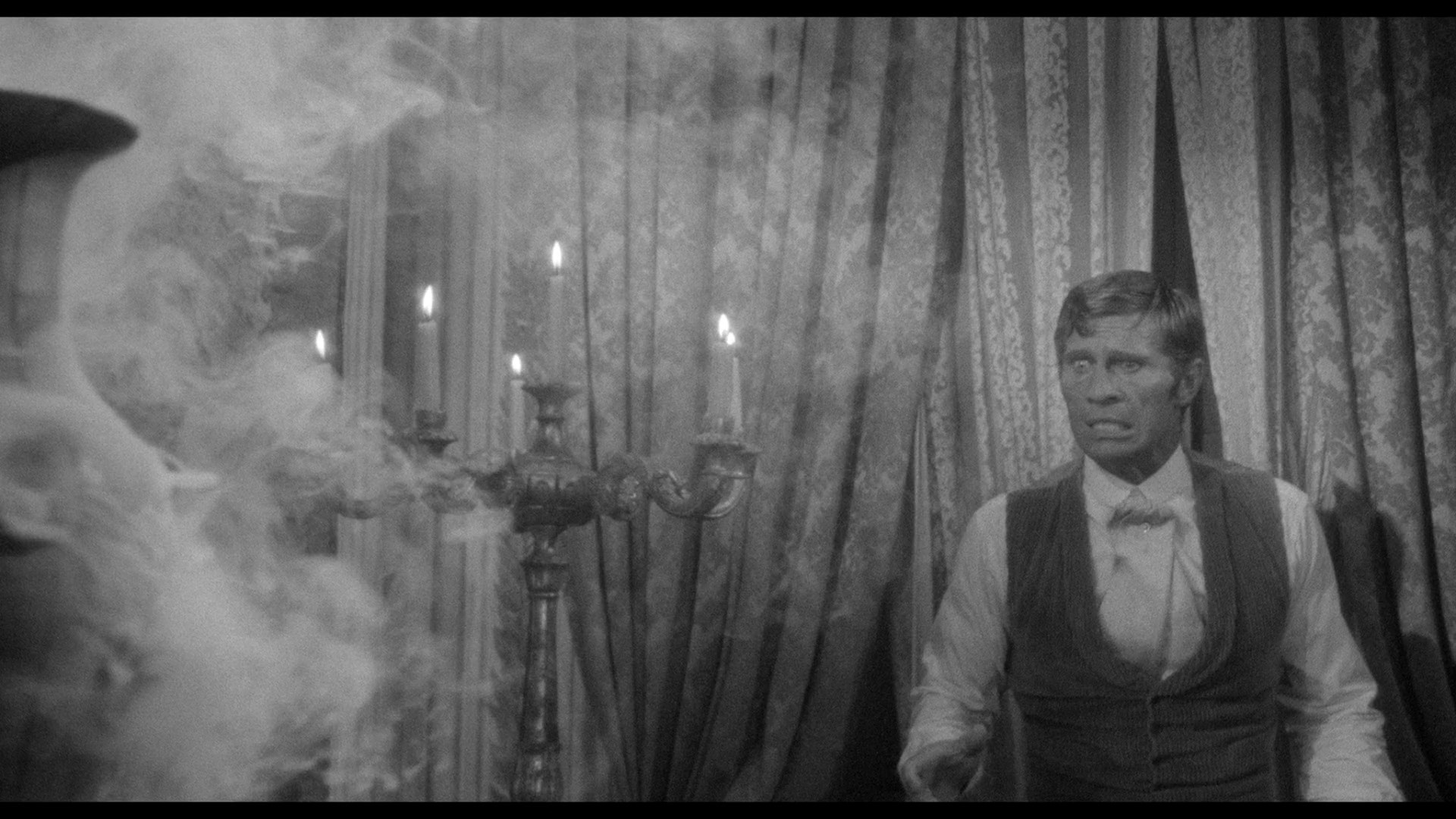 Susan
Susan 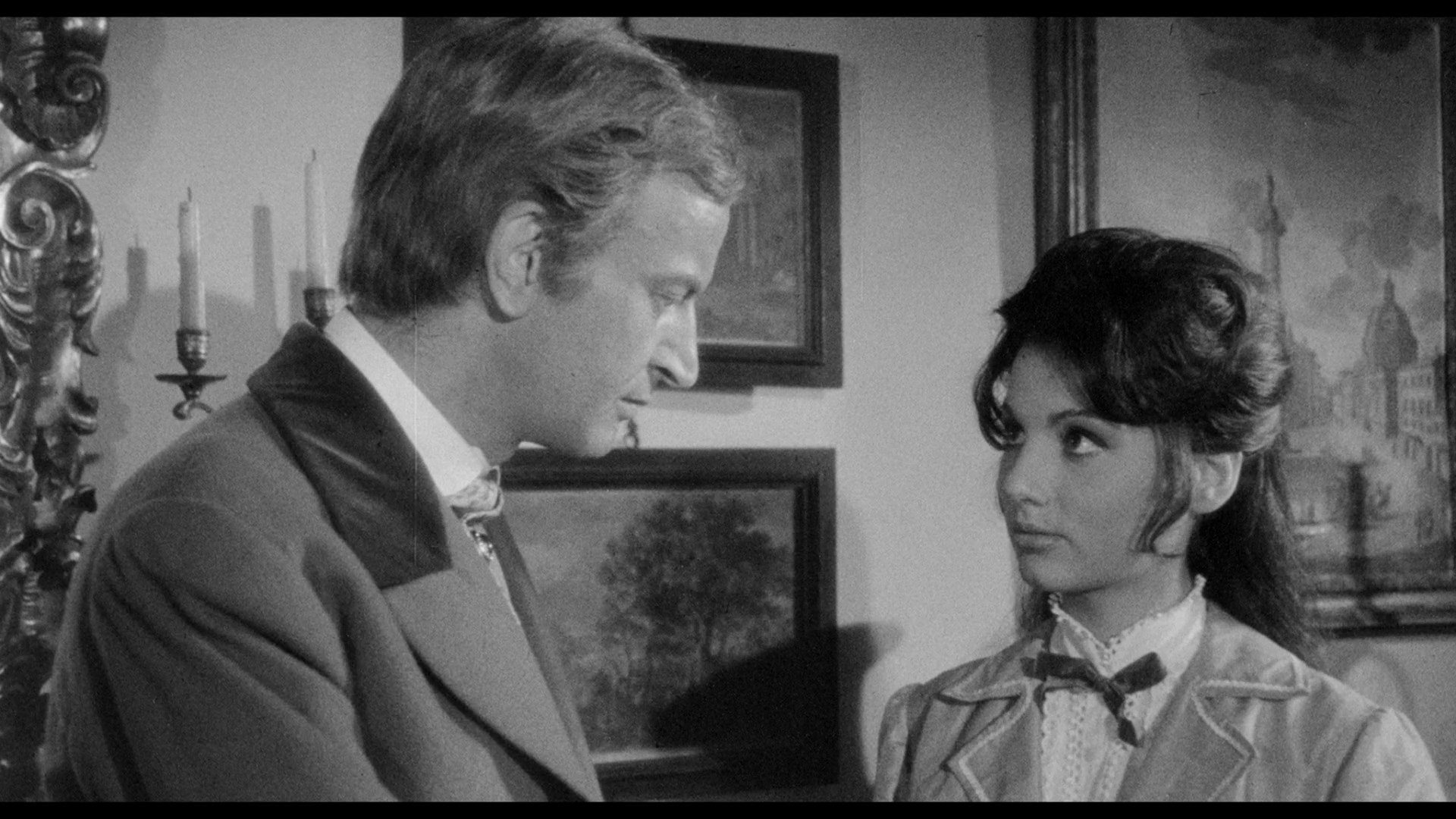 Blackhouse (Nelli) is deeply in love with architect Pierre (Forain), who gets called off to business in Paris. The couple decide to announce their engagement to her uncle, Neville (Kechler), in the presence of the aristocratic Sir Harold Morgan, who has to be up to no good since he's played by regular perverse Jess Franco villain and Nightmare Castle star Paul Muller. Sure enough, Sir Morgan tags along on Pierre's boat trip to France (apparently they're supposed to be in England?) and chucks him overboard so he can have Lady Susan and her fortune to himself. Struck with amnesia in a hospital, Pierre is helpless to take action as Susan marries the scheming baddie who's barely even trying to camouflage his affair with their sinister housekeeper and nanny(?), Lillian (Blanc), with a plot afoot to drive Susan mad and perhaps even knock her off for her inheritance while hulking manservant Roger (peplum star Mitchell) torments Uncle Blackhouse in the dungeon. And that's just the setup...
Blackhouse (Nelli) is deeply in love with architect Pierre (Forain), who gets called off to business in Paris. The couple decide to announce their engagement to her uncle, Neville (Kechler), in the presence of the aristocratic Sir Harold Morgan, who has to be up to no good since he's played by regular perverse Jess Franco villain and Nightmare Castle star Paul Muller. Sure enough, Sir Morgan tags along on Pierre's boat trip to France (apparently they're supposed to be in England?) and chucks him overboard so he can have Lady Susan and her fortune to himself. Struck with amnesia in a hospital, Pierre is helpless to take action as Susan marries the scheming baddie who's barely even trying to camouflage his affair with their sinister housekeeper and nanny(?), Lillian (Blanc), with a plot afoot to drive Susan mad and perhaps even knock her off for her inheritance while hulking manservant Roger (peplum star Mitchell) torments Uncle Blackhouse in the dungeon. And that's just the setup... 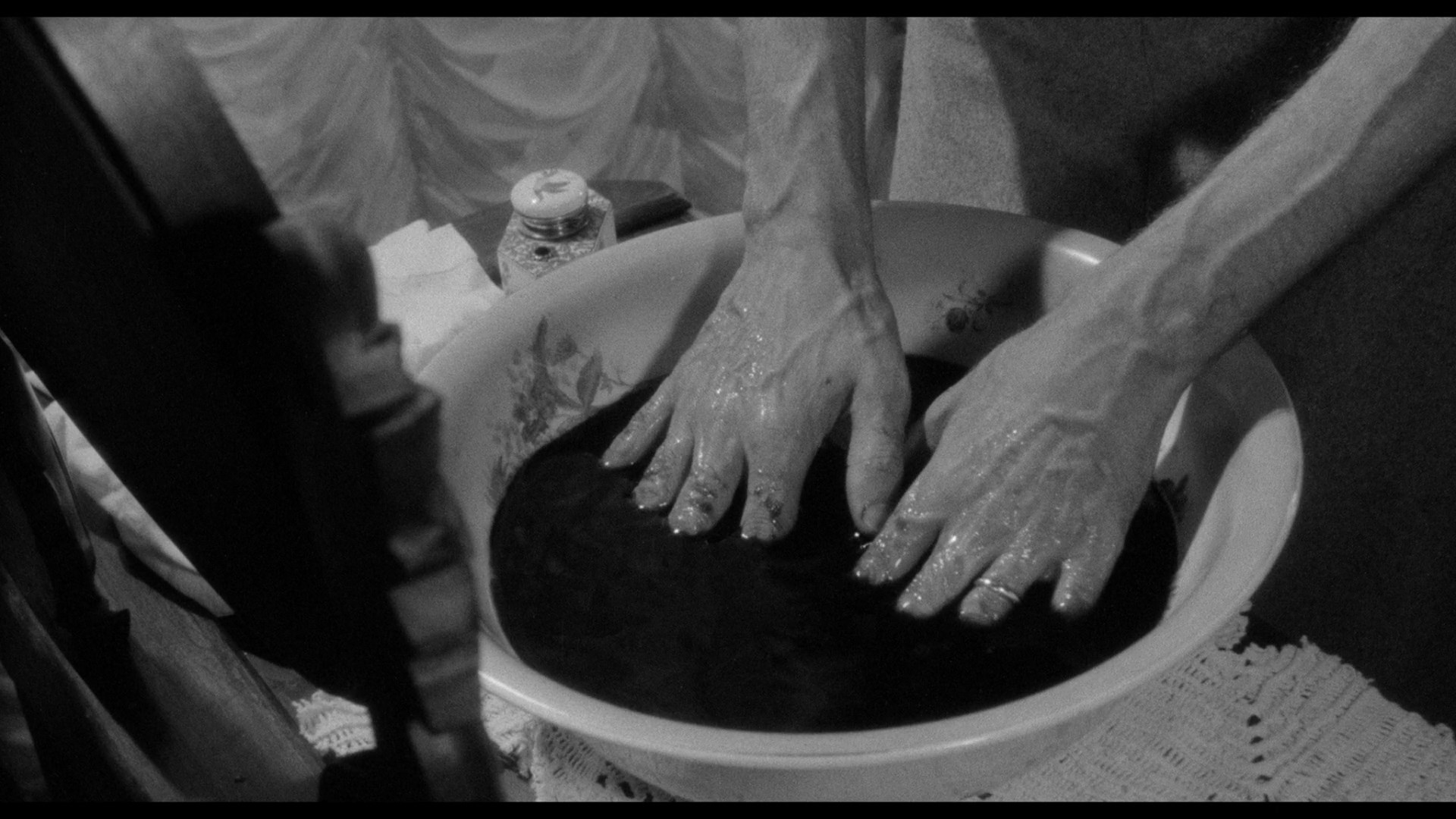 means she focuses more on the Italian Gothic in general while offering a bit about Pupillo and some of the cast members. As with many of her other tracks,
means she focuses more on the Italian Gothic in general while offering a bit about Pupillo and some of the cast members. As with many of her other tracks, 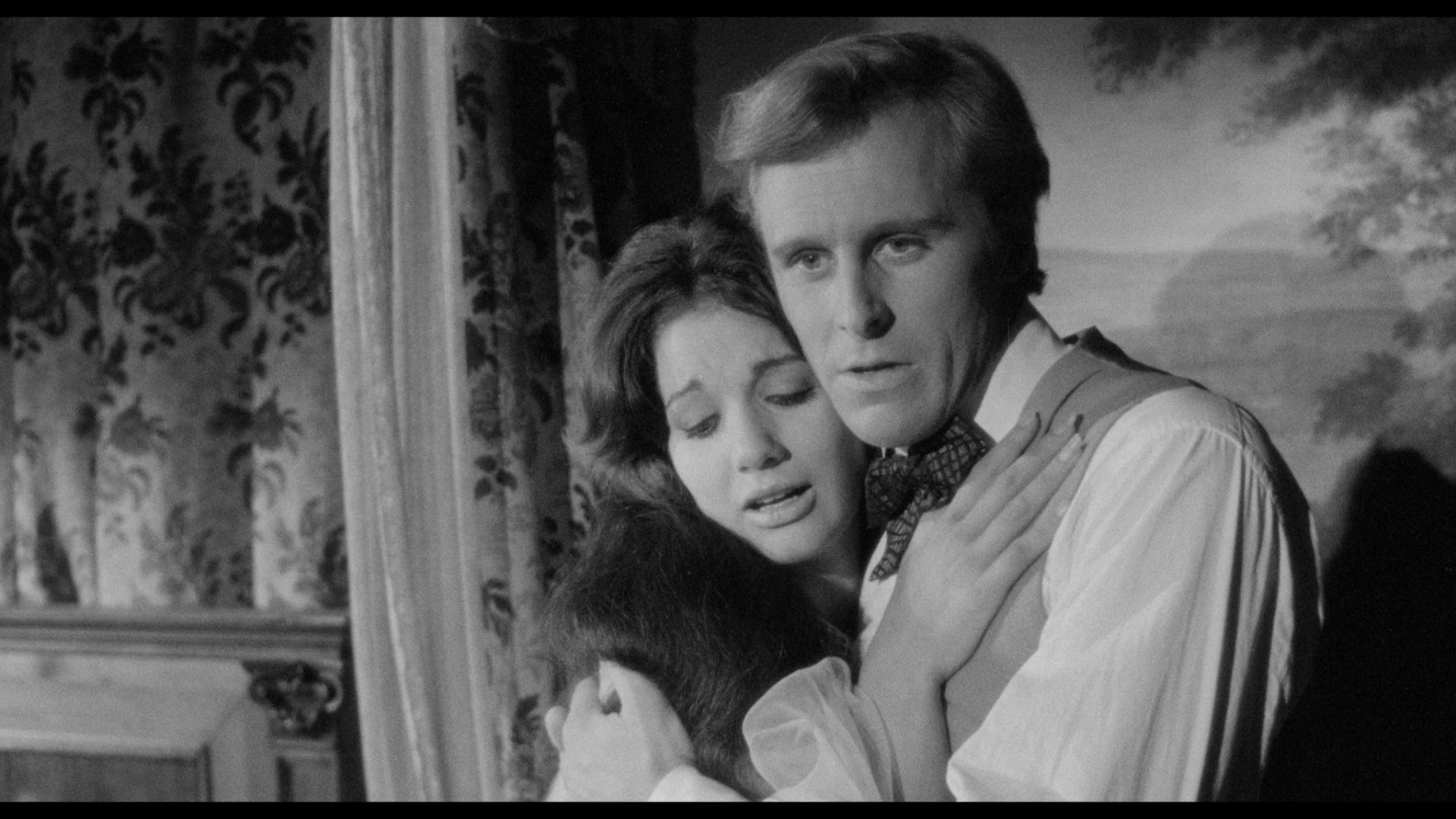 there are very long silent gaps throughout so keep the remote handy. The video extras here (most courtesy of Freak-o-Rama) kick off with a "Vengeance from Beyond" (4m38s) intro by Mark Thompson Ashworth talking about the central location, similarities to Castle of Blood, and his preference for this over Bloody Pit. "The Grudge" (21m29s) is a compelling new video essay by Kat Ellinger (who oversaw this entire set) covering the transposition of the Hollywood revenge Gothic to Italy, the trope of the "wronged woman" including incarnations by Barbara Steele and other horror icons, and ties to similar narrative strands in Japanese folklore and cinema from Kwaidan to Ring. "When We Were Vampires" (24m4s) is a new interview with Blanc about her first real leading role here, her fond memories of her fellow cast members and director, the most vivid memory of having to kiss Gordon Mitchell, and her affinity for making horror movies. "Born To Be a Villain" (20m3s) is a newly edited video interview with Muller (who passed away a few years ago) about his own acting background, his early days in French cinema, his frequent casting in bad guy roles, his experiences watching audiences at his films, and thoughts on some of his key roles in various genres from swashbucklers to horror. "The Pupillo Tapes" (20m16s) is a newly edited audio interview with Pupillo originally conducted in 1993 for Italian radio by Fabio Melelli, focusing primarily on his three horror films but also going into his spaghetti western, Django Kills Softly, and some of his other projects, often signed as "Max Hunter" or "Ralph Zucker." Also included are the complete 59-image original cineromanzo (published in Suspense in 1971, a gallery of 10 images, and the subtitled Italian trailer.
there are very long silent gaps throughout so keep the remote handy. The video extras here (most courtesy of Freak-o-Rama) kick off with a "Vengeance from Beyond" (4m38s) intro by Mark Thompson Ashworth talking about the central location, similarities to Castle of Blood, and his preference for this over Bloody Pit. "The Grudge" (21m29s) is a compelling new video essay by Kat Ellinger (who oversaw this entire set) covering the transposition of the Hollywood revenge Gothic to Italy, the trope of the "wronged woman" including incarnations by Barbara Steele and other horror icons, and ties to similar narrative strands in Japanese folklore and cinema from Kwaidan to Ring. "When We Were Vampires" (24m4s) is a new interview with Blanc about her first real leading role here, her fond memories of her fellow cast members and director, the most vivid memory of having to kiss Gordon Mitchell, and her affinity for making horror movies. "Born To Be a Villain" (20m3s) is a newly edited video interview with Muller (who passed away a few years ago) about his own acting background, his early days in French cinema, his frequent casting in bad guy roles, his experiences watching audiences at his films, and thoughts on some of his key roles in various genres from swashbucklers to horror. "The Pupillo Tapes" (20m16s) is a newly edited audio interview with Pupillo originally conducted in 1993 for Italian radio by Fabio Melelli, focusing primarily on his three horror films but also going into his spaghetti western, Django Kills Softly, and some of his other projects, often signed as "Max Hunter" or "Ralph Zucker." Also included are the complete 59-image original cineromanzo (published in Suspense in 1971, a gallery of 10 images, and the subtitled Italian trailer.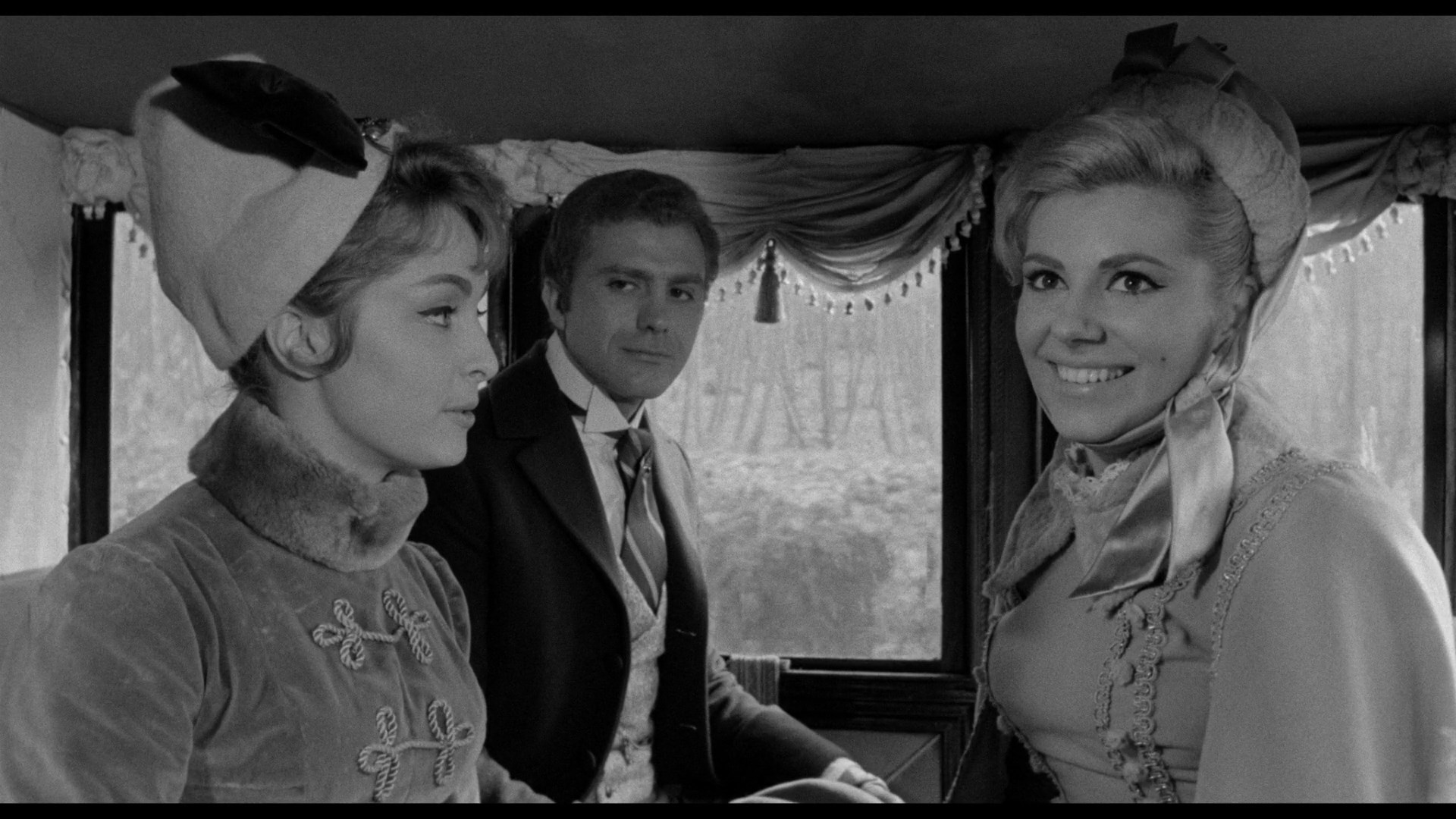 the traditional Gothic castle fun with The Blancheville Monster, here shown in its Italian and English-language
the traditional Gothic castle fun with The Blancheville Monster, here shown in its Italian and English-language 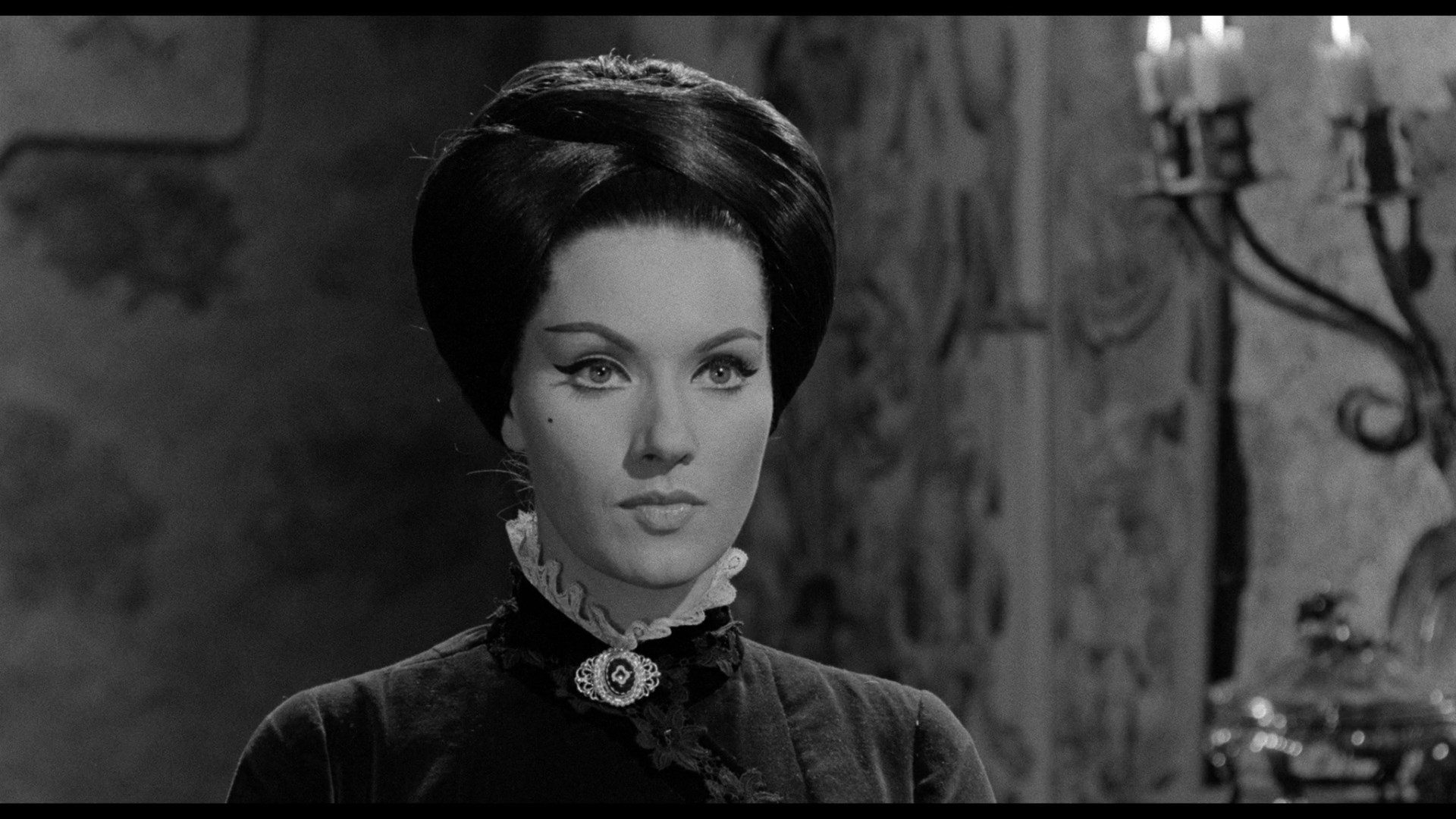 versions under the original title, Horror. This was the first horror film (and fourth feature overall) for genre-hopping director Alberto De Martino, who started off with peplums and later went on to more widely circulated films like The Antichrist, Strange Shadows in an Empty Room, Holocaust 2000, and The Pumaman. Dumped straight to TV in dubbed form by AIP back in the '60s, the film plays a lot better here now that you can actually savor the creepy production design and crisp photography for the first time anywhere outside of an Italian theater.
versions under the original title, Horror. This was the first horror film (and fourth feature overall) for genre-hopping director Alberto De Martino, who started off with peplums and later went on to more widely circulated films like The Antichrist, Strange Shadows in an Empty Room, Holocaust 2000, and The Pumaman. Dumped straight to TV in dubbed form by AIP back in the '60s, the film plays a lot better here now that you can actually savor the creepy production design and crisp photography for the first time anywhere outside of an Italian theater.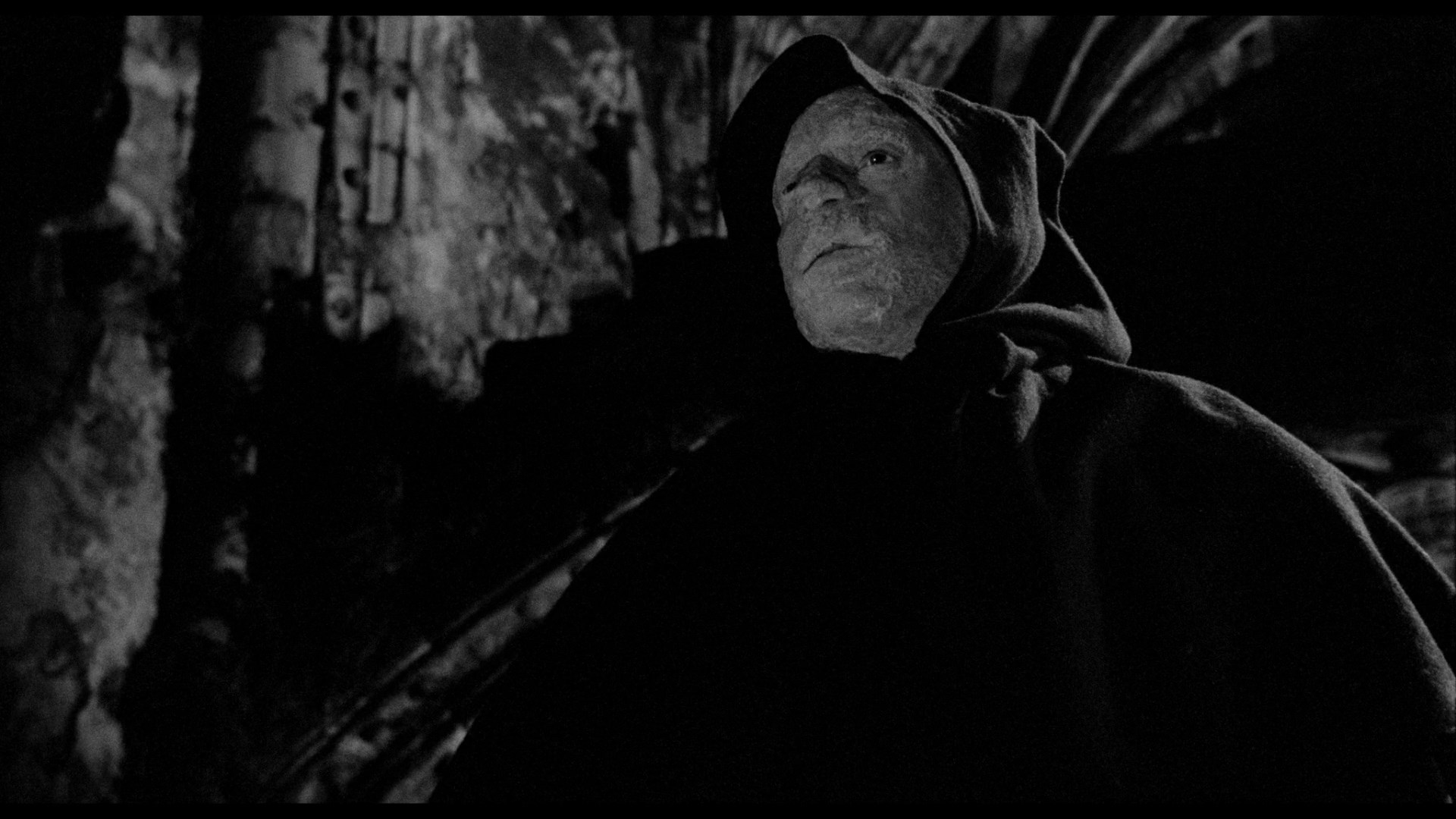 her supposedly dead father, is actually cloistered away out of sight in a tower after being severely burned. At night she starts wandering against her will through the ruins around the castle, and it soon becomes clear that a supposed family curse
her supposedly dead father, is actually cloistered away out of sight in a tower after being severely burned. At night she starts wandering against her will through the ruins around the castle, and it soon becomes clear that a supposed family curse  involving Emilie's death when she turns 21 within the week might soon come to pass.
involving Emilie's death when she turns 21 within the week might soon come to pass.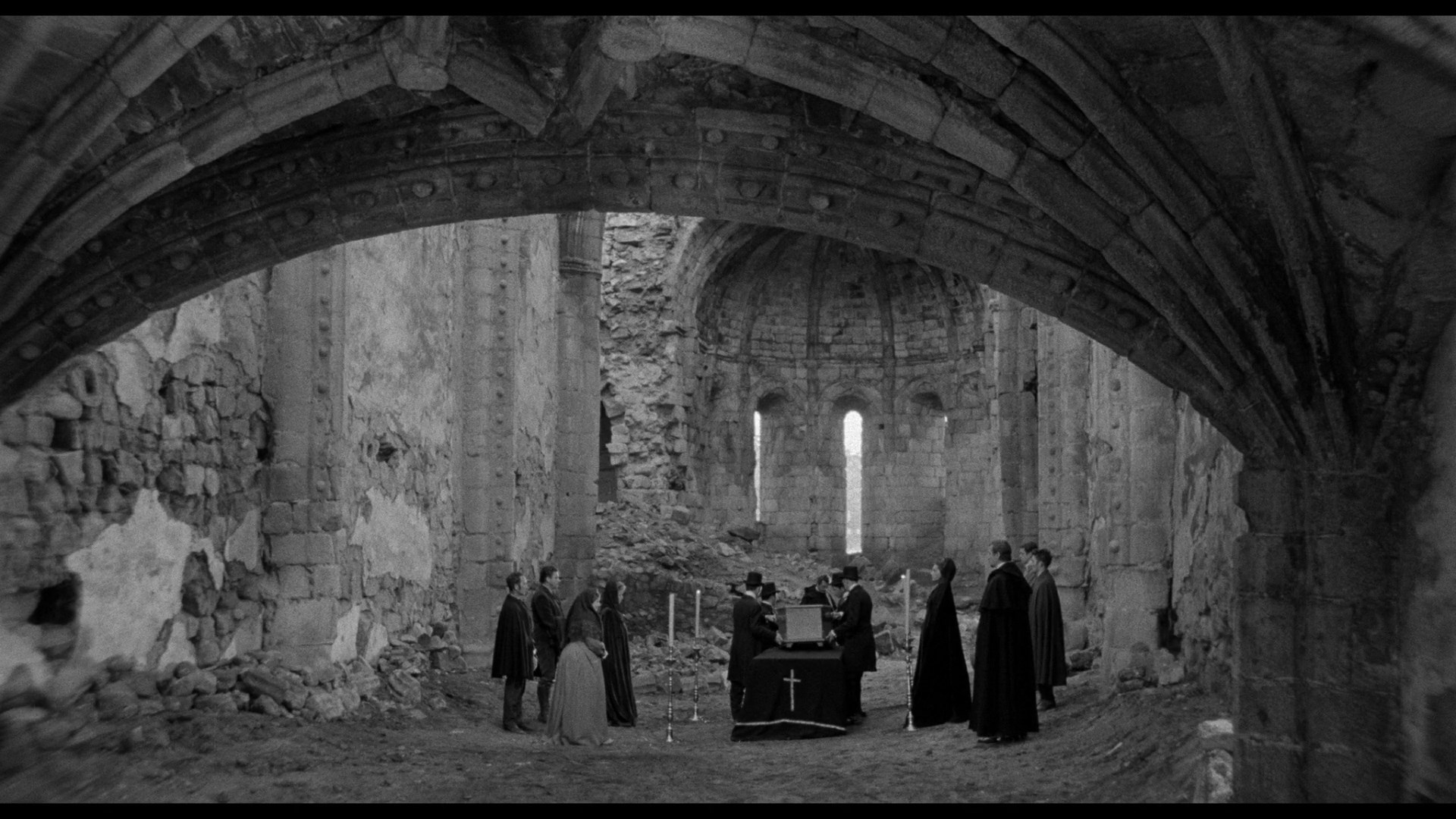 different throughout; the dialogue for the English dub was considerably overhauled almost line for line, and even the general location is changed (Brittany in the English dub, somewhere in Scotland in the Italian). A new commentary by Paul Anthony Nelson is spirited fun as he comments about how this film is a bit "rough around
different throughout; the dialogue for the English dub was considerably overhauled almost line for line, and even the general location is changed (Brittany in the English dub, somewhere in Scotland in the Italian). A new commentary by Paul Anthony Nelson is spirited fun as he comments about how this film is a bit "rough around 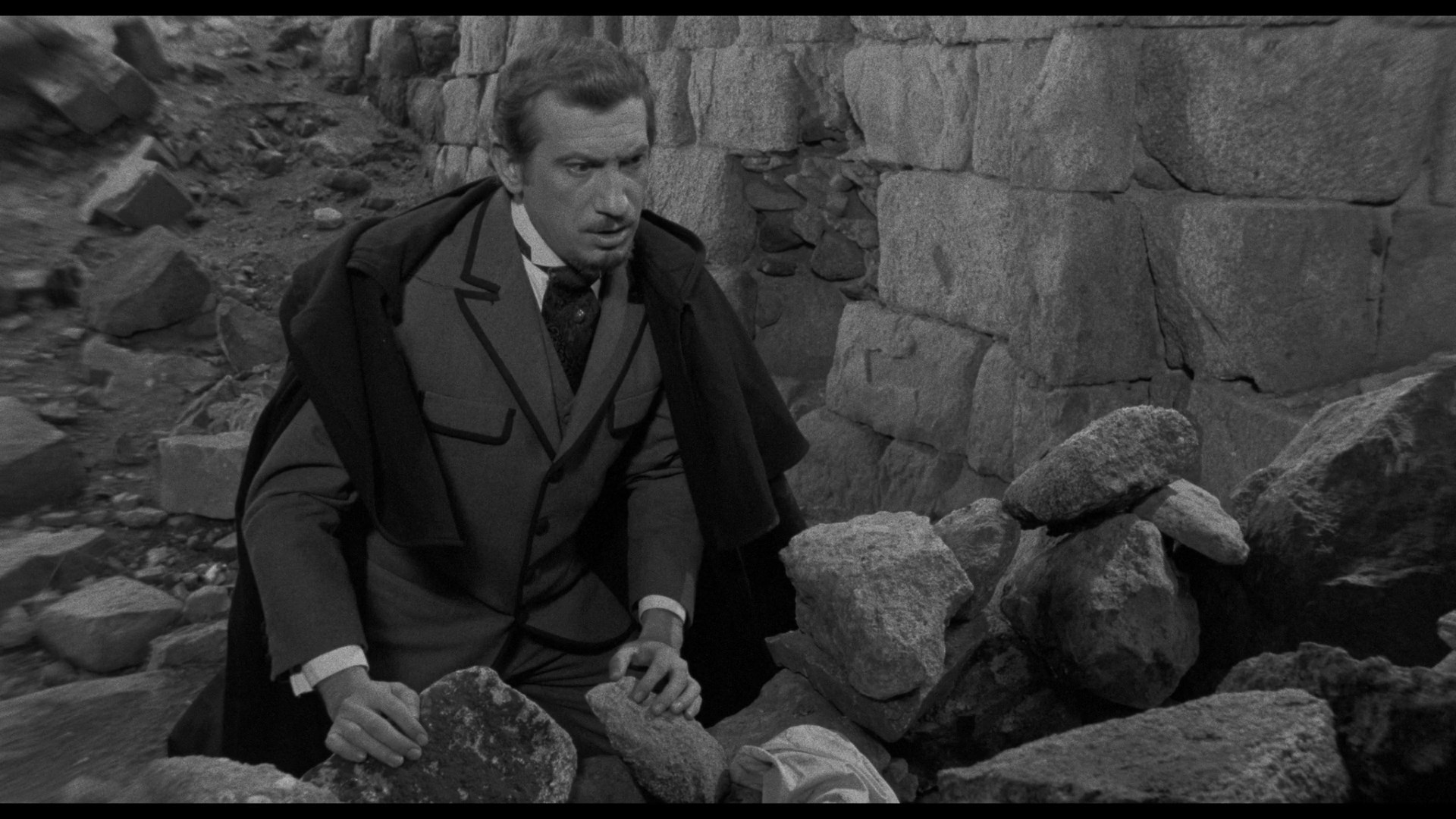 the edges" due to its relatively green director (who vocally dismissed it later) and early status in the Gothic sweepstakes, then points out all the Poe references, the amusing resemblance of Leo Anchóriz's performance (as the ambiguous family doctor) to Vincent Price, the echoes of Rebecca's Mrs. Danvers in Liné's character, and tons more. In "Castle of Horror" (6m49s), Ashworth provides another video intro noting the influence of Corman's The Fall of the House of Usher and The Premature Burial. "Are You Sure It Wasn't Just Your Imagination?" (20m54s) is a new video essay by Keith Allison examining how the film and its Poe-Corman influence sprang from the 1957 arrival of Hammer horror and the horror tropes it manipulates while running parallel with other European genre productions. Finally in "Welcome to the Manor" (13m55s), Antonio Tentori focuses on contextualizing this film within De Martino's career and as part of the Italian fantastic cinema wave at large. Also included are the 3m11 American title sequence (pulled from a VHS source), the really wild William Castle-style Italian trailer, and a three-image gallery.
the edges" due to its relatively green director (who vocally dismissed it later) and early status in the Gothic sweepstakes, then points out all the Poe references, the amusing resemblance of Leo Anchóriz's performance (as the ambiguous family doctor) to Vincent Price, the echoes of Rebecca's Mrs. Danvers in Liné's character, and tons more. In "Castle of Horror" (6m49s), Ashworth provides another video intro noting the influence of Corman's The Fall of the House of Usher and The Premature Burial. "Are You Sure It Wasn't Just Your Imagination?" (20m54s) is a new video essay by Keith Allison examining how the film and its Poe-Corman influence sprang from the 1957 arrival of Hammer horror and the horror tropes it manipulates while running parallel with other European genre productions. Finally in "Welcome to the Manor" (13m55s), Antonio Tentori focuses on contextualizing this film within De Martino's career and as part of the Italian fantastic cinema wave at large. Also included are the 3m11 American title sequence (pulled from a VHS source), the really wild William Castle-style Italian trailer, and a three-image gallery.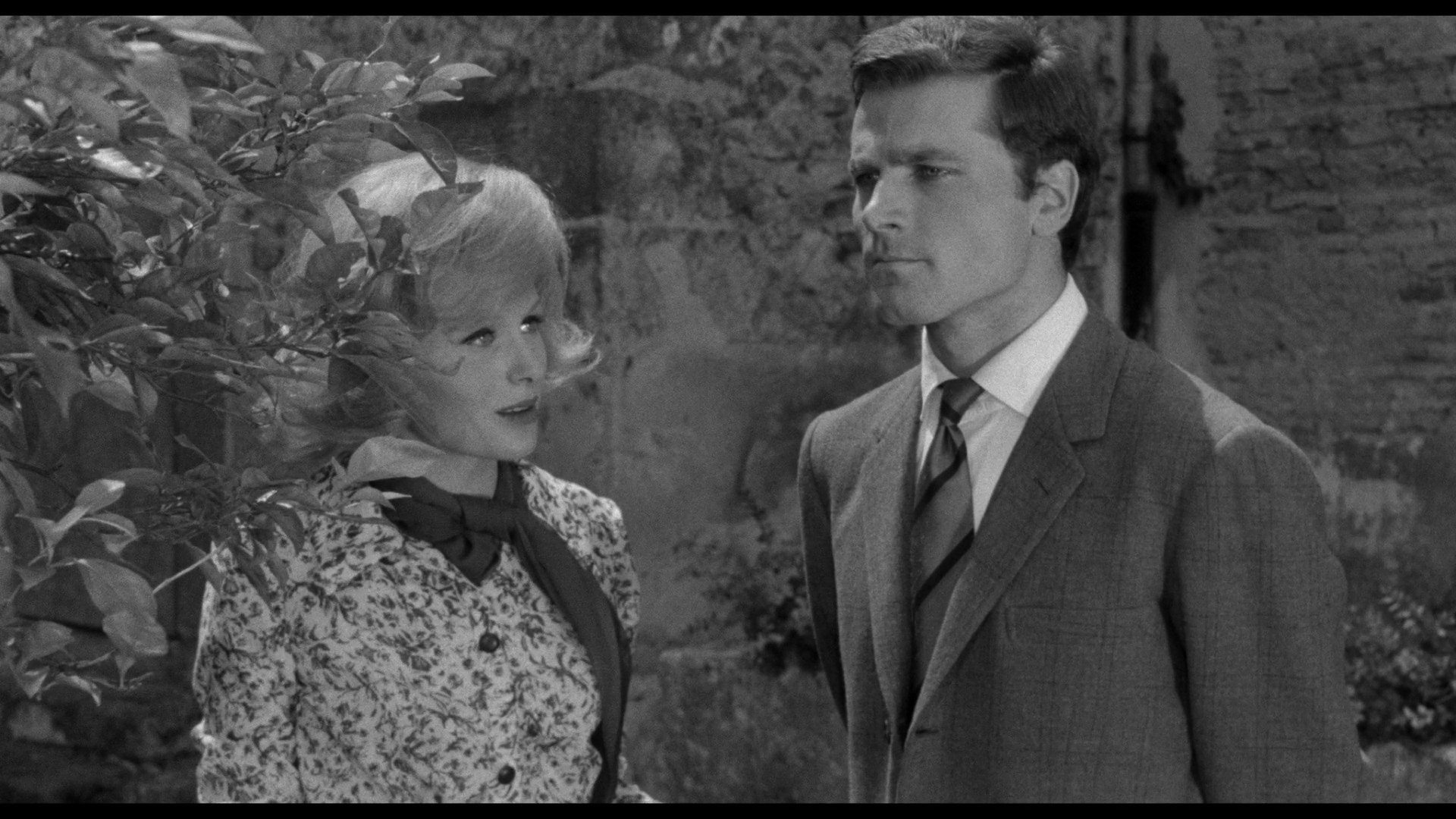 three delivers a film that's been referenced far more often than actually seen among
three delivers a film that's been referenced far more often than actually seen among 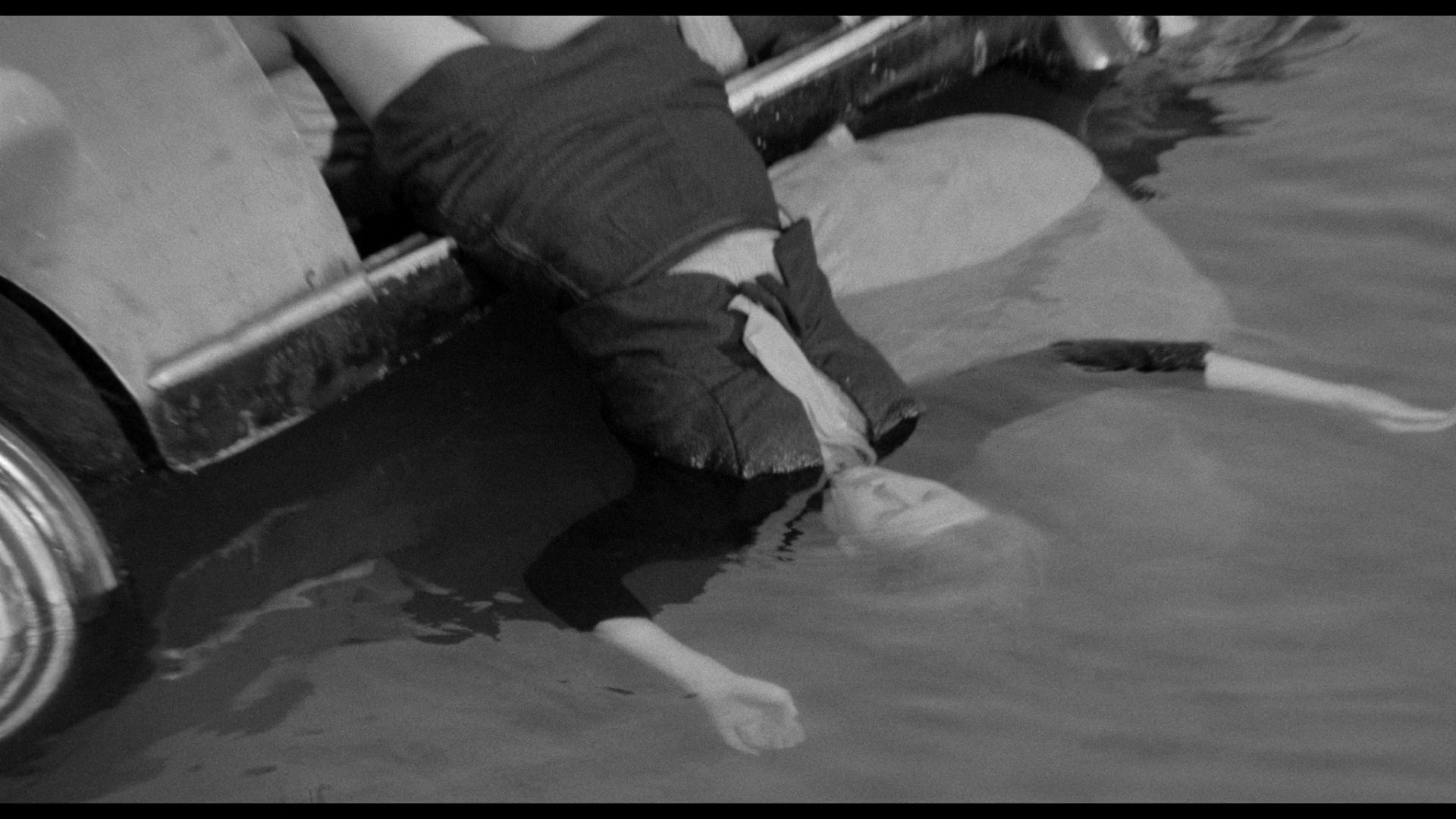 English-speaking horror fans: Il terzo occhio or The Third Eye, starring a young and impossibly chiseled Franco Nero the same year he broke through to stardom in Django. This one is especially noteworthy to Italian horror fans since it was remade (without credit) by Joe D'Amato in 1979 as the infamous gore shocker, Beyond the Darkness. The plotline here has one extra major character but is otherwise the same, albeit without the plentiful guts and fingernail mayhem that made the D'Amato film a sick splatter classic. Recycling the excellent music score from The Ghost by Francesco De Masi (credited here as "Frank Mason"), our tale depicts the descent into madness of aristocrat Mino (Nero) who lives in a sprawling and dysfunctional household with his overbearing countess mother (Solbelli) and acid-tongued housekeeper, Marta (Pascal). In two weeks the petulant Mino is engaged to marry the sweet-natured Laura (Blanc), but whom mom despises so much she intimates she'd reward Marta for committing a bit of homicide. Secretly pining for Mino herself, Marta cuts the brakes of Laura's car which results in the young woman's death in front of Mino while he's in hot pursuit. Meanwhile Marta and mama have a fight back at the house resulting in the latter's own demise, a double whammy that sends
English-speaking horror fans: Il terzo occhio or The Third Eye, starring a young and impossibly chiseled Franco Nero the same year he broke through to stardom in Django. This one is especially noteworthy to Italian horror fans since it was remade (without credit) by Joe D'Amato in 1979 as the infamous gore shocker, Beyond the Darkness. The plotline here has one extra major character but is otherwise the same, albeit without the plentiful guts and fingernail mayhem that made the D'Amato film a sick splatter classic. Recycling the excellent music score from The Ghost by Francesco De Masi (credited here as "Frank Mason"), our tale depicts the descent into madness of aristocrat Mino (Nero) who lives in a sprawling and dysfunctional household with his overbearing countess mother (Solbelli) and acid-tongued housekeeper, Marta (Pascal). In two weeks the petulant Mino is engaged to marry the sweet-natured Laura (Blanc), but whom mom despises so much she intimates she'd reward Marta for committing a bit of homicide. Secretly pining for Mino herself, Marta cuts the brakes of Laura's car which results in the young woman's death in front of Mino while he's in hot pursuit. Meanwhile Marta and mama have a fight back at the house resulting in the latter's own demise, a double whammy that sends  Mino on a psychotic, murderous bender killing nearby women at home next to Laura's embalmed body in the
Mino on a psychotic, murderous bender killing nearby women at home next to Laura's embalmed body in the 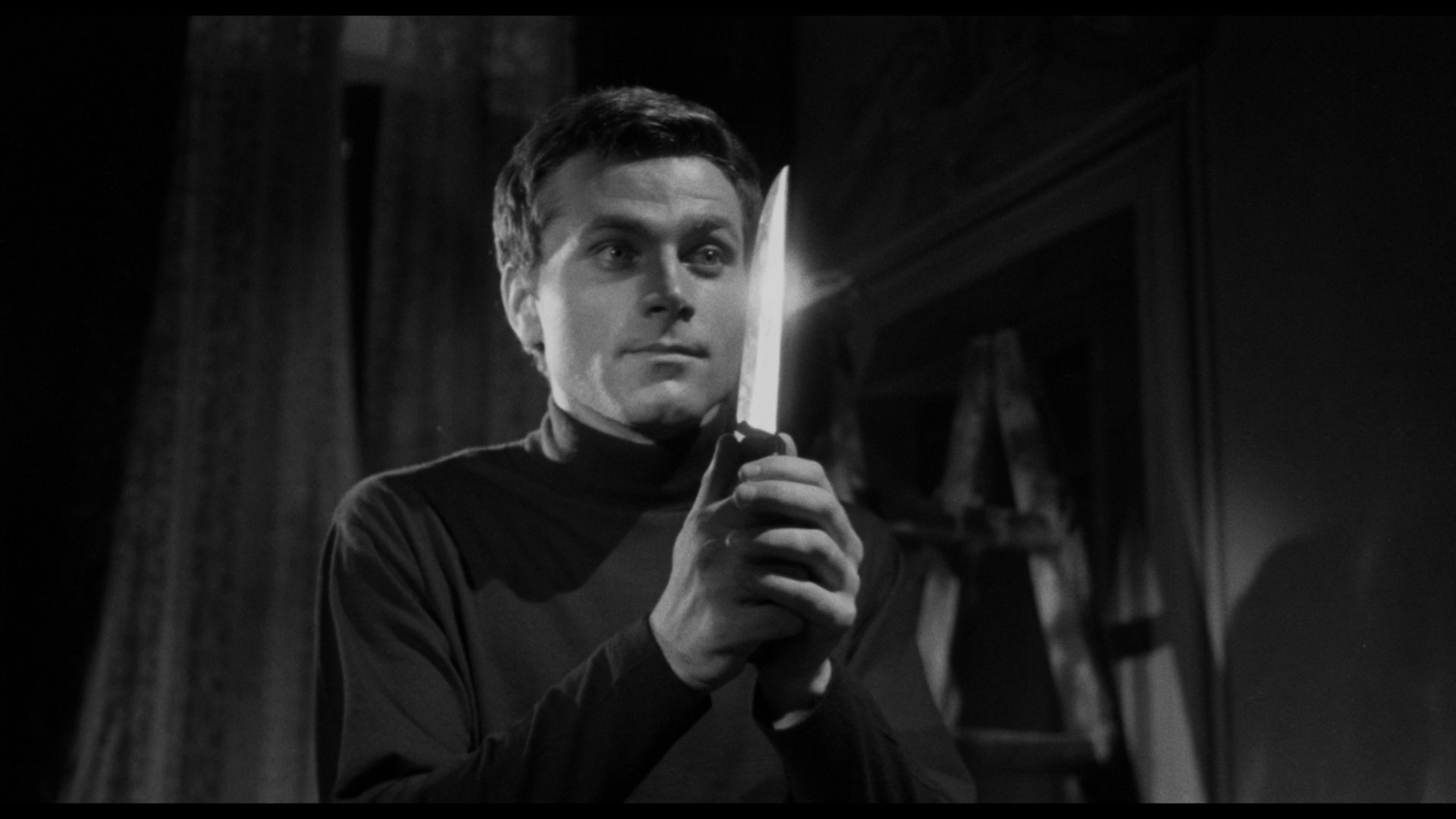 bedroom. However, when Laura's identical twin Daniela (also Blanc) shows up, things get even more twisted...
bedroom. However, when Laura's identical twin Daniela (also Blanc) shows up, things get even more twisted...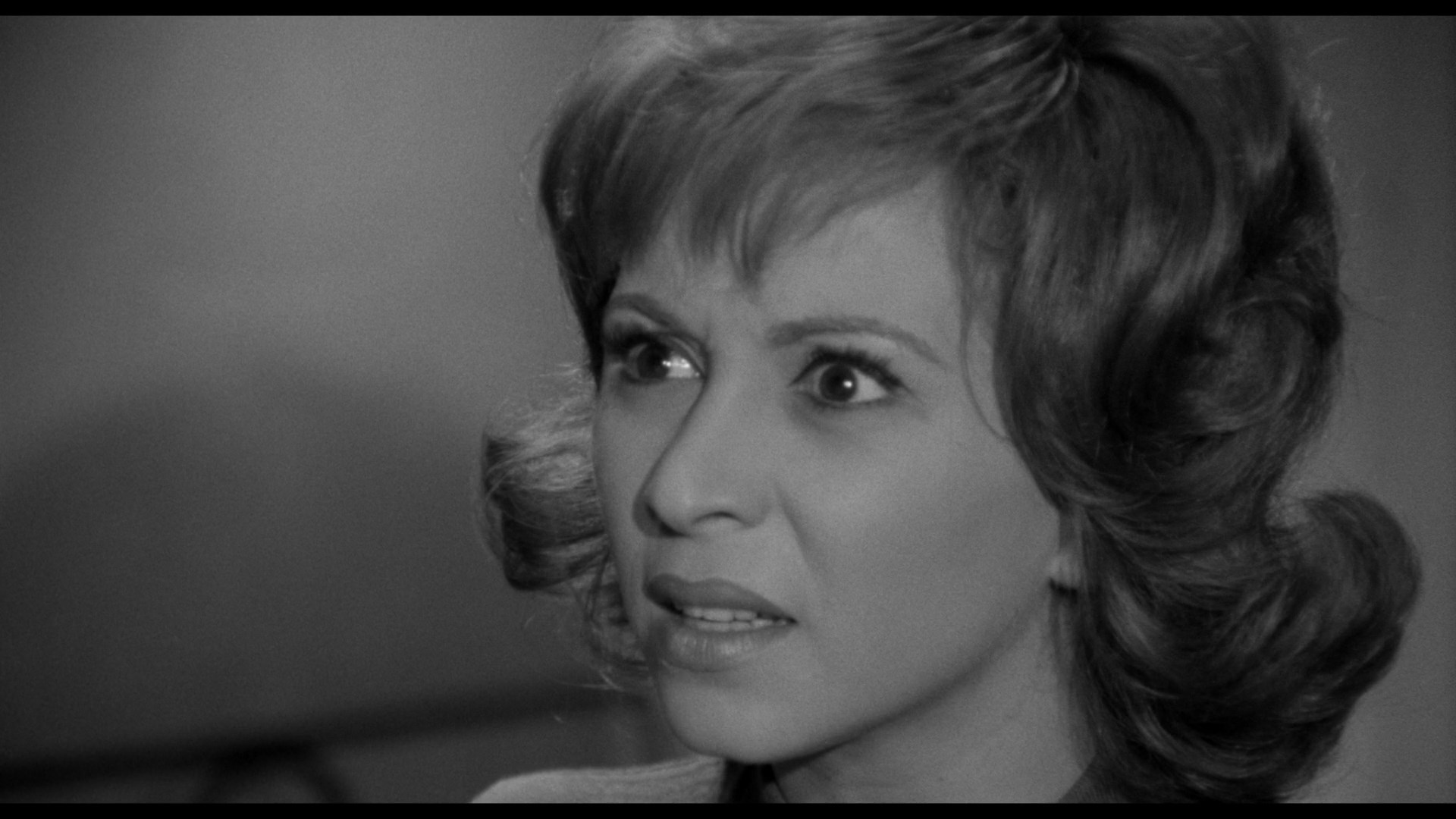 English track, which is quite well done and very welcome here in addition to the usual Italian audio. The film only has Italian title
English track, which is quite well done and very welcome here in addition to the usual Italian audio. The film only has Italian title 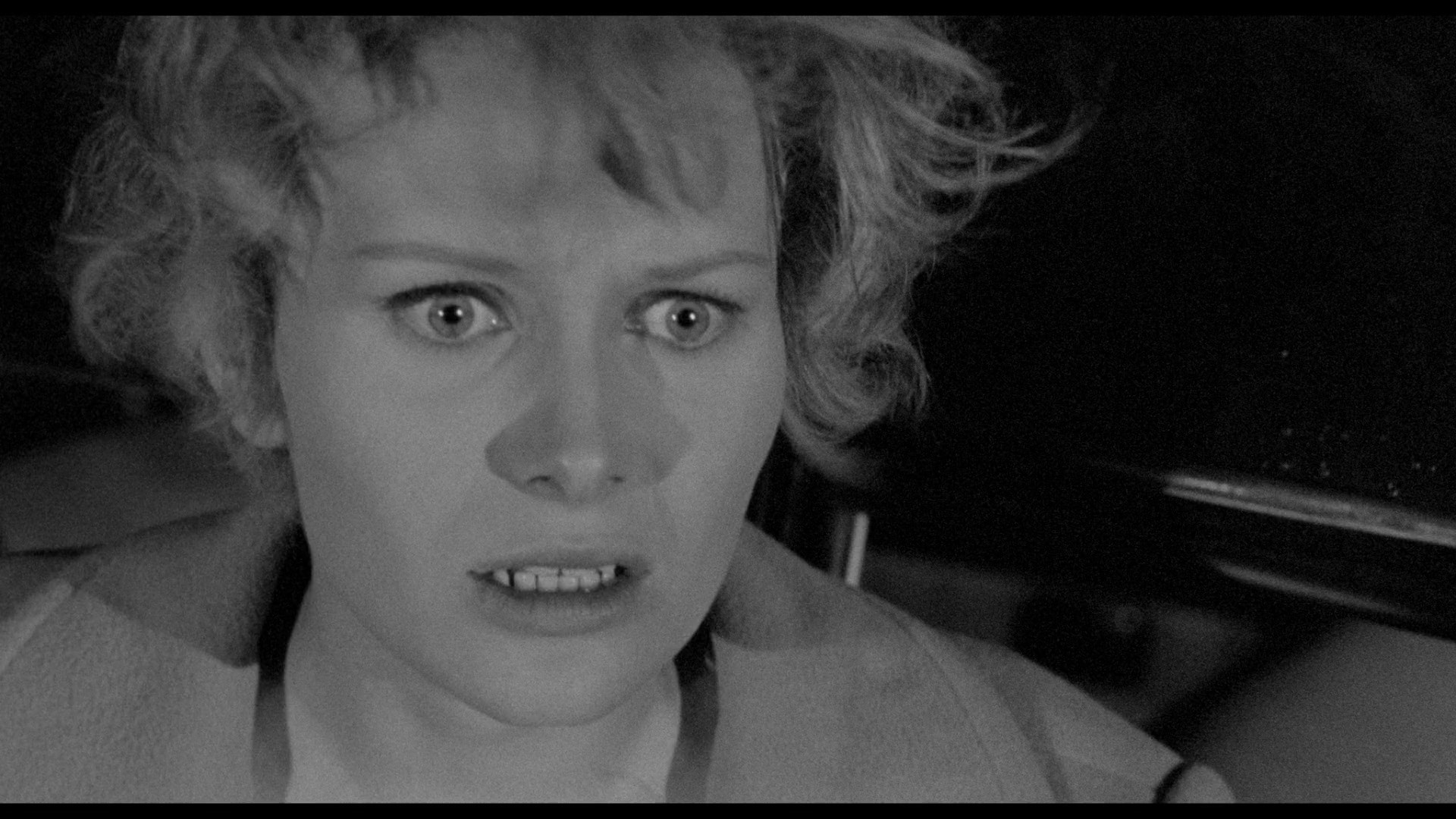 sequences though, so it's still undetermined whether English ones were prepared for possible export. Again there are some interesting variations in meaning between the two versions and both are equally valid, so it's worth sitting through twice. A superb and very thorough new commentary by Rachael Nisbet is jammed with great insights and tidbits about the film from start to finish, juggling observations about director Mino Guerrini's aesthetic choices, background about the creation of the script including its nonexistent literary source, the Hitchcock influences, and the psychological ramifications of the characterizations. Ashworth turns up again for "The Cold Kiss of Death" (6m15s), which starts by claiming this was never dubbed in English (oops) and provides some trivia about the production personnel and observations about the grimy subject matter versus the elegant visuals. In "Nostalgia Becomes Necrophilia" (12m), Lindsay Hallam studies the film's visual scheme as an extension of the melodramatic and Gothic conventions in the story, while "All Eyes on Erika" (15m40s) finds Blanc returning to chat about one of her final black-and-white roles, her career in the mid-'60s, the experience of playing a dual role, and her memories of Nero. A gallery of five images is also included.
sequences though, so it's still undetermined whether English ones were prepared for possible export. Again there are some interesting variations in meaning between the two versions and both are equally valid, so it's worth sitting through twice. A superb and very thorough new commentary by Rachael Nisbet is jammed with great insights and tidbits about the film from start to finish, juggling observations about director Mino Guerrini's aesthetic choices, background about the creation of the script including its nonexistent literary source, the Hitchcock influences, and the psychological ramifications of the characterizations. Ashworth turns up again for "The Cold Kiss of Death" (6m15s), which starts by claiming this was never dubbed in English (oops) and provides some trivia about the production personnel and observations about the grimy subject matter versus the elegant visuals. In "Nostalgia Becomes Necrophilia" (12m), Lindsay Hallam studies the film's visual scheme as an extension of the melodramatic and Gothic conventions in the story, while "All Eyes on Erika" (15m40s) finds Blanc returning to chat about one of her final black-and-white roles, her career in the mid-'60s, the experience of playing a dual role, and her memories of Nero. A gallery of five images is also included.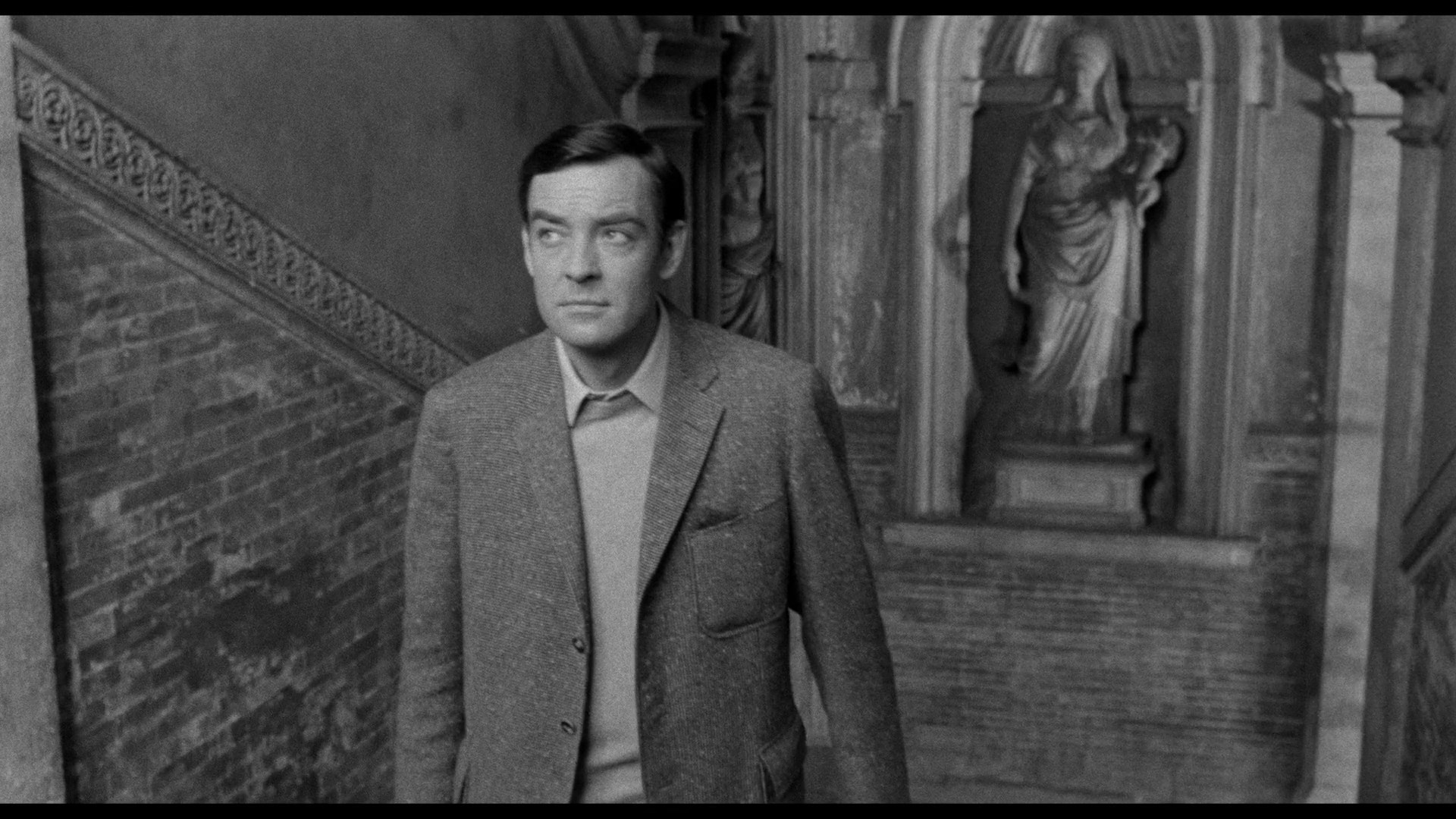 on disc four we step outside of traditional horror for the only film in this batch to receive
on disc four we step outside of traditional horror for the only film in this batch to receive 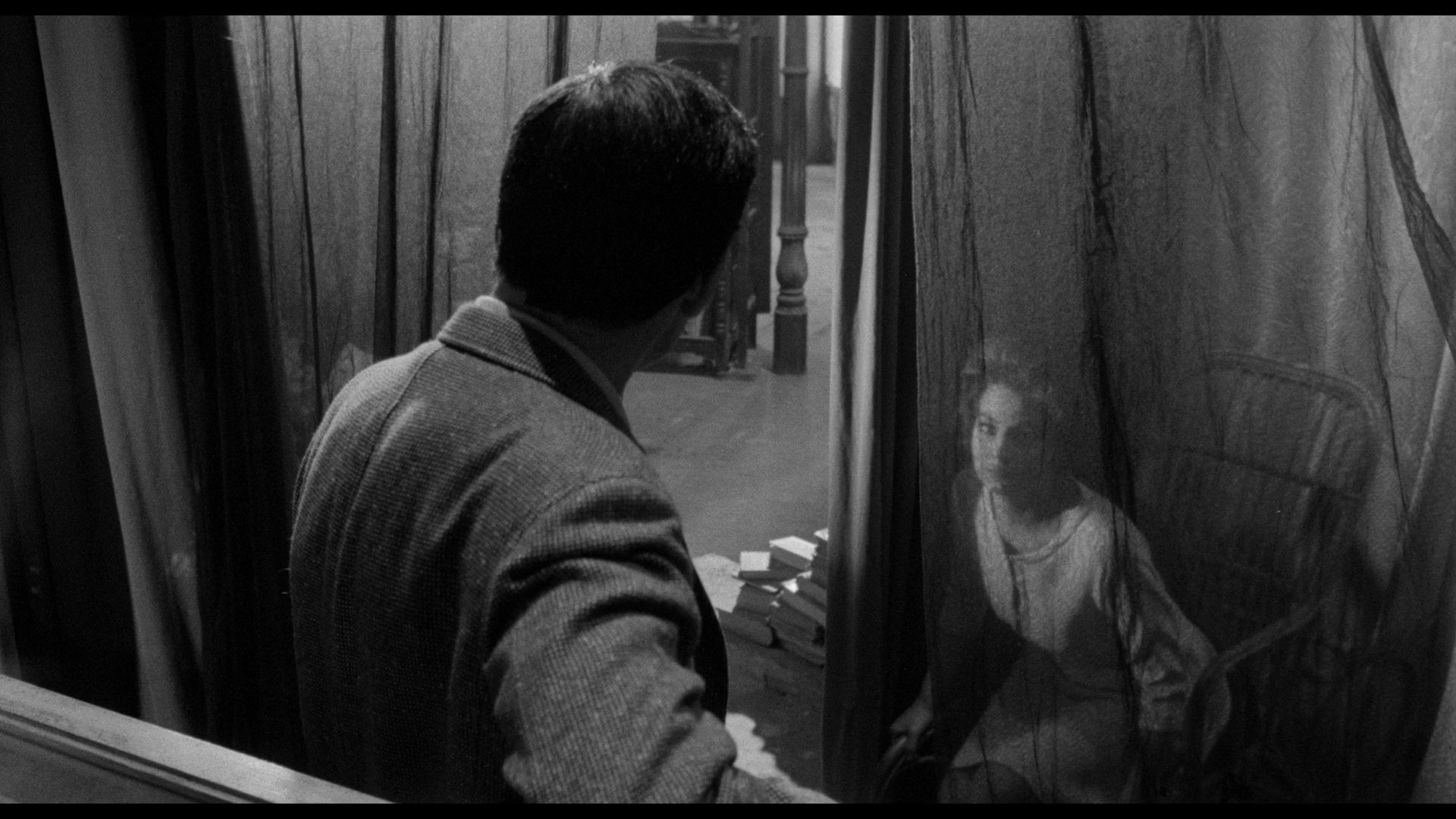 significant English-language theatrical distribution, 1966's La strega in amore or The Witch. Kind of a supernatural chamber melodrama, the film directed by Damiano Damiani (Amityville II: The Possession, Mafia, The Most Beautiful Wife) is probably the closest thing we'll get to what an occult story by Luchino Visconti might feel like and sports a marvelous jazz score by future Oscar winner Luis Bacalov (Il Postino, Django). In the second of what would be many of his Italian roles, British actor Richard Johnson (Zombie, Beyond the Door, The Great Alligator) stars as Sergio, an archivist and historian who answers an ad for someone to catalog the manuscripts of a dead nobleman. He arrives at the sprawling apartment in the heart of Rome to find the dusty library managed by the widow and lady of the house, Consuelo (Ferrati), who met her husband when she was sixteen in Mexico and now wants his erotic journals preserved for posterity. Her beautiful daughter, Aura (The Killer Reserved Nine Seats and The Slave's Schiaffino), quickly entrances Sergio, but it seems there are some twisted games going on here that have already ensnared other men like the unfortunate and very frazzled Fabrizio (Volontè). As the title already indicates,
significant English-language theatrical distribution, 1966's La strega in amore or The Witch. Kind of a supernatural chamber melodrama, the film directed by Damiano Damiani (Amityville II: The Possession, Mafia, The Most Beautiful Wife) is probably the closest thing we'll get to what an occult story by Luchino Visconti might feel like and sports a marvelous jazz score by future Oscar winner Luis Bacalov (Il Postino, Django). In the second of what would be many of his Italian roles, British actor Richard Johnson (Zombie, Beyond the Door, The Great Alligator) stars as Sergio, an archivist and historian who answers an ad for someone to catalog the manuscripts of a dead nobleman. He arrives at the sprawling apartment in the heart of Rome to find the dusty library managed by the widow and lady of the house, Consuelo (Ferrati), who met her husband when she was sixteen in Mexico and now wants his erotic journals preserved for posterity. Her beautiful daughter, Aura (The Killer Reserved Nine Seats and The Slave's Schiaffino), quickly entrances Sergio, but it seems there are some twisted games going on here that have already ensnared other men like the unfortunate and very frazzled Fabrizio (Volontè). As the title already indicates, 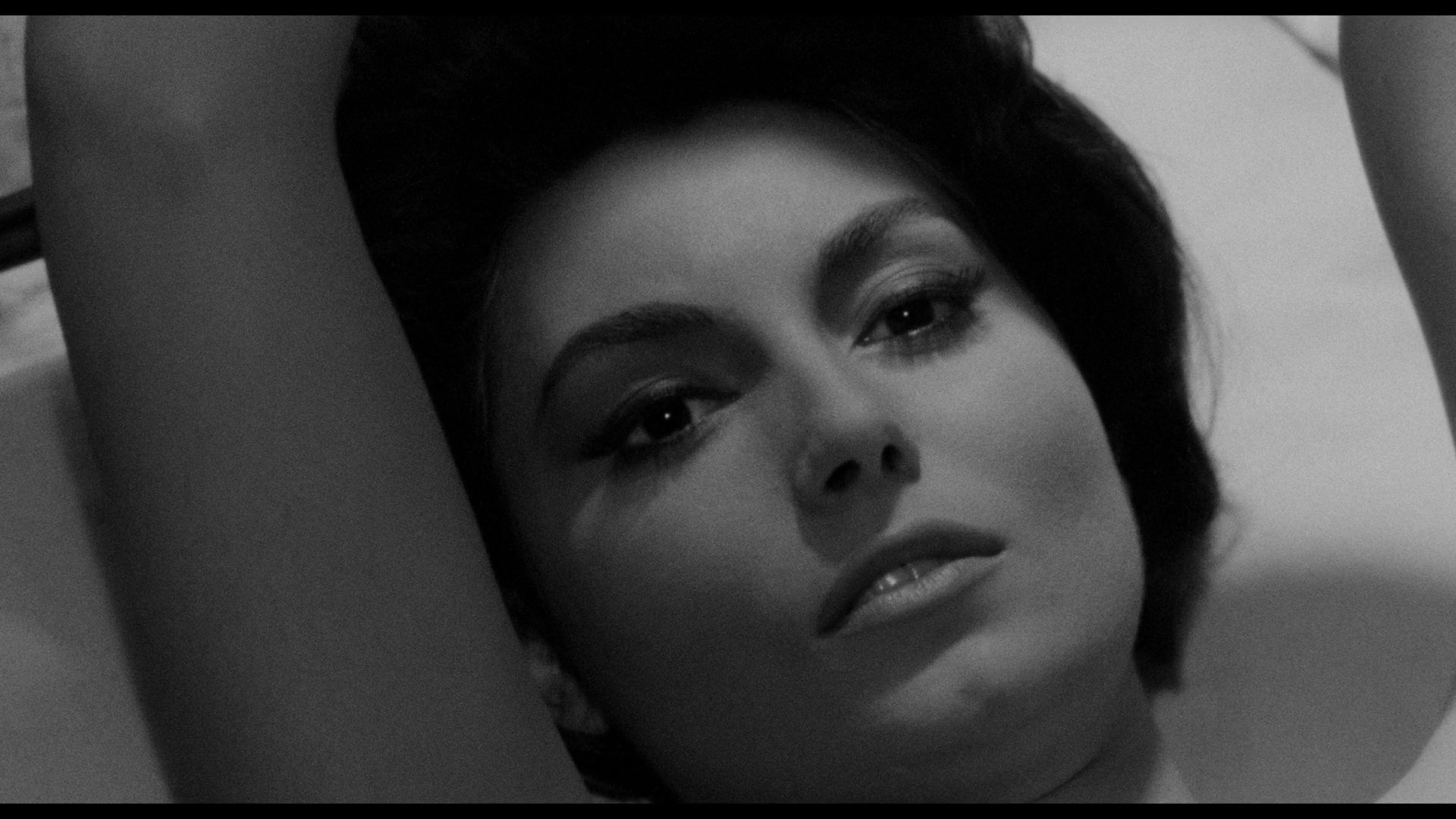 there's something distinctly strange going on in the house,
there's something distinctly strange going on in the house,  but Sergio's reaction to it might be the real reason to be afraid.
but Sergio's reaction to it might be the real reason to be afraid.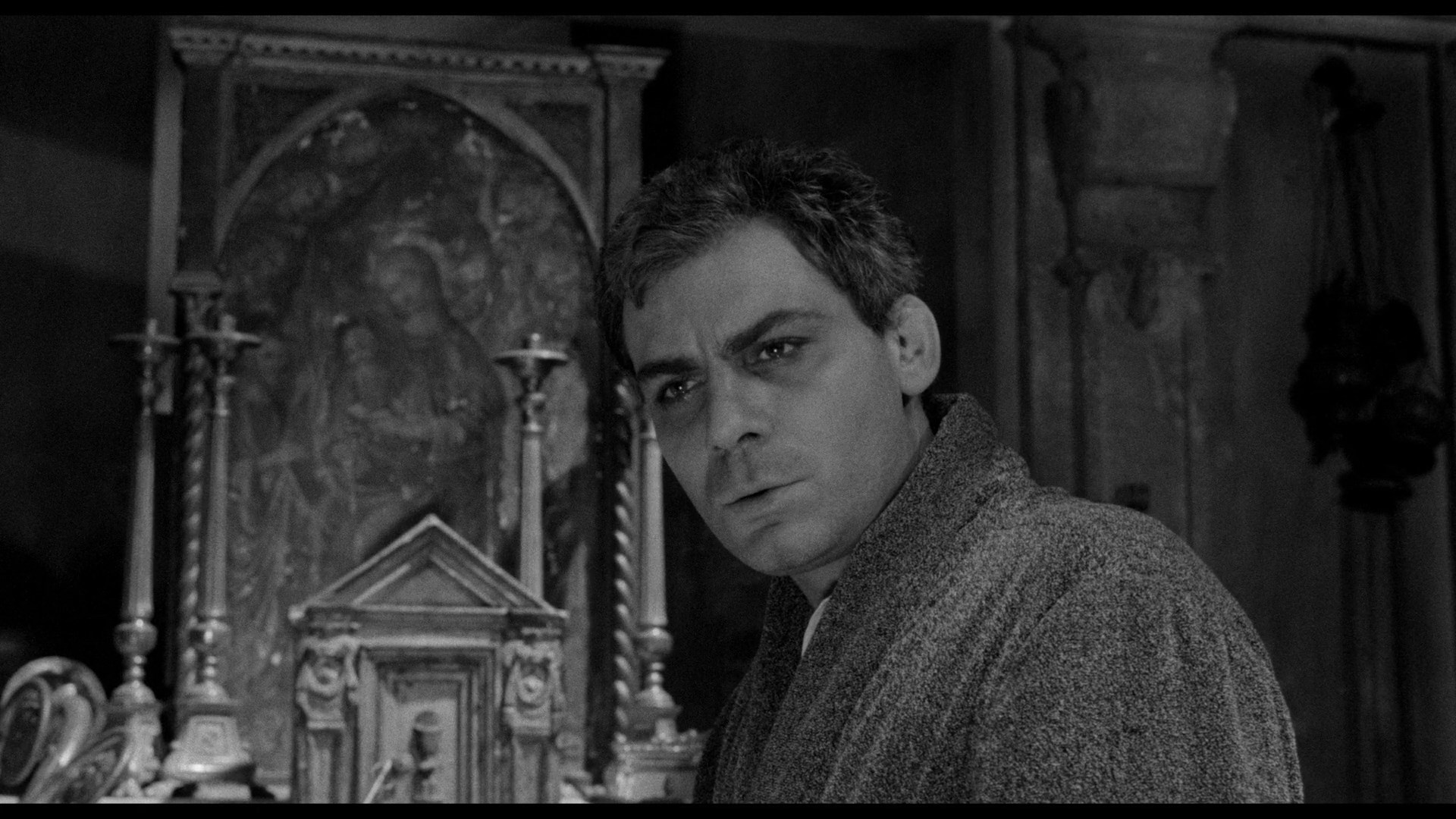 U.S. and U.K. home video debut here
U.S. and U.K. home video debut here 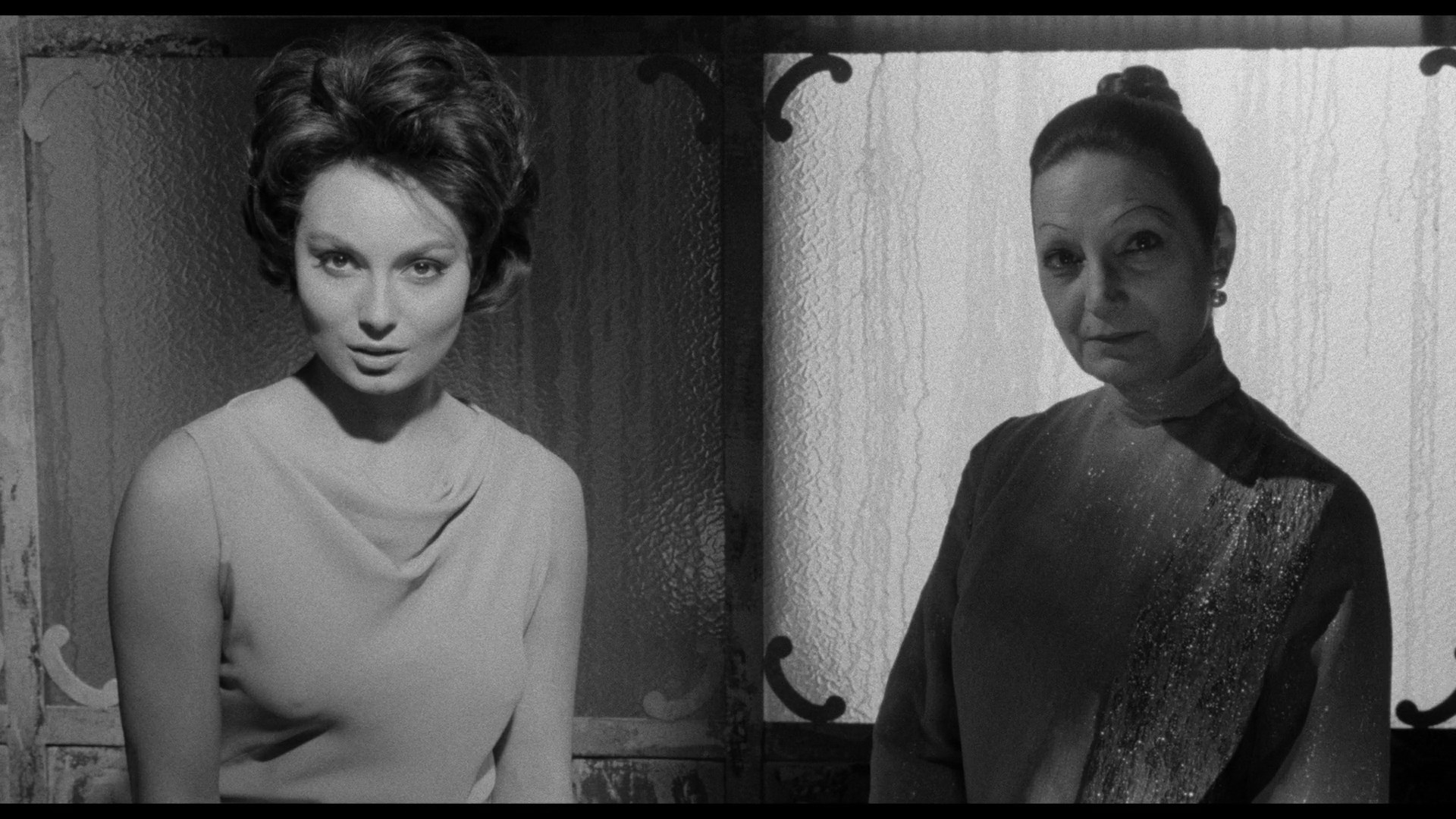 after years of substandard gray market releases of its English-dubbed version. Here you get both the English and Italian tracks (with their respective title sequences as Strange Obsession and La strega in amore) with optional English SDH or English translated subtitles, and it's a toss up as to which one is preferable given that Johnson performed in English and the rest of the actors seemed to speak mostly (but not entirely) in Italian. Ellinger contributes an enthused and very worthwhile audio commentary here making a case for this as a Gothic film while reeling out info about the cast, the fairy tale aspects of the story, ties to other genre films like Lisa and the Devil and Blood and Roses, the traditions of paganism, the trope of the trapped man, and the psychological implications of the story including its resolution. In "Witchery" (3m46s), Ashworth admits up front he's least comfortable talking about this one but touches on Damiani and his intellectual approach. In "Loving the Devil" (24m25s), Miranda Corcoran examines this film as part of a larger tradition of the depiction of witches in popular culture from ancient stories and artwork through more benevolent depictions like Bewitched, with a particular focus on the metamorphic qualities lent to witches in various countries. In "The Rome Witch Project" (18m38s), Tentori focuses on Damiani, the source novel and its author, and the creation of a modern Gothic that refuses to be easily pigeonholed. A gallery of five images is also included.
after years of substandard gray market releases of its English-dubbed version. Here you get both the English and Italian tracks (with their respective title sequences as Strange Obsession and La strega in amore) with optional English SDH or English translated subtitles, and it's a toss up as to which one is preferable given that Johnson performed in English and the rest of the actors seemed to speak mostly (but not entirely) in Italian. Ellinger contributes an enthused and very worthwhile audio commentary here making a case for this as a Gothic film while reeling out info about the cast, the fairy tale aspects of the story, ties to other genre films like Lisa and the Devil and Blood and Roses, the traditions of paganism, the trope of the trapped man, and the psychological implications of the story including its resolution. In "Witchery" (3m46s), Ashworth admits up front he's least comfortable talking about this one but touches on Damiani and his intellectual approach. In "Loving the Devil" (24m25s), Miranda Corcoran examines this film as part of a larger tradition of the depiction of witches in popular culture from ancient stories and artwork through more benevolent depictions like Bewitched, with a particular focus on the metamorphic qualities lent to witches in various countries. In "The Rome Witch Project" (18m38s), Tentori focuses on Damiani, the source novel and its author, and the creation of a modern Gothic that refuses to be easily pigeonholed. A gallery of five images is also included.![]()